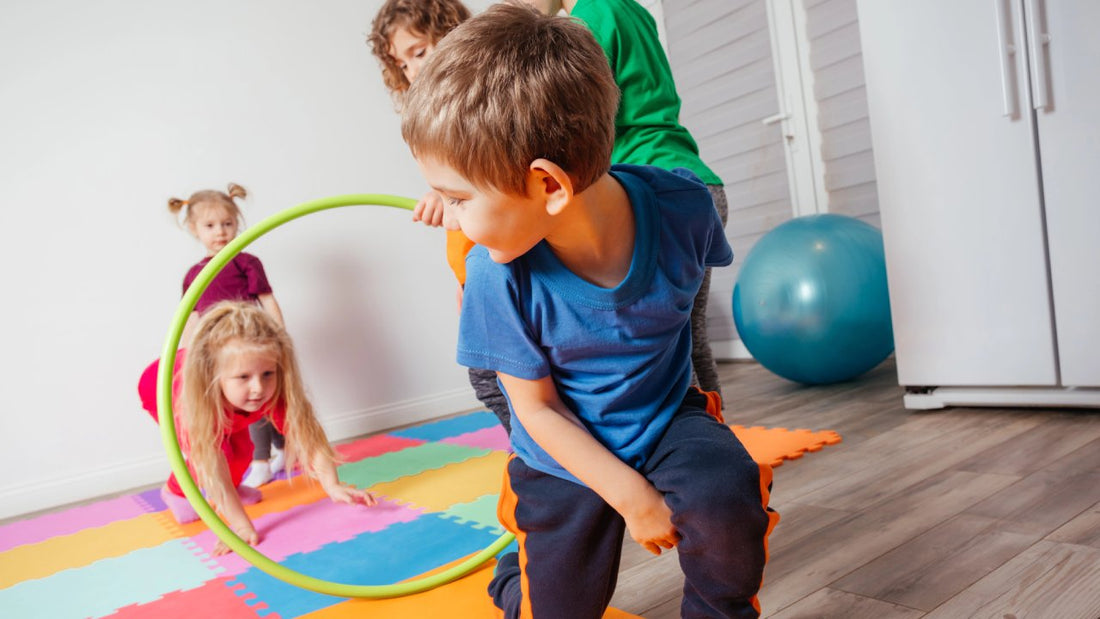
Obstacle Course for Kids – A Smart Way to Support Early Development
Share
Obstacle course for kids is more than just a backyard activity. It’s a hands-on way for children to build coordination, balance, and confidence. For new mothers, understanding how these playful setups support growth can make a big difference in daily routines.
Let’s break it down.
Why obstacle courses matter for young children
Obstacle courses help kids develop:
- 🧠 Cognitive skills through problem-solving
- 🦶 Gross motor skills like jumping, crawling, and climbing
- 👫 Social interaction when playing with siblings or friends
According to the Australian Government’s Department of Health, physical activity in early childhood improves bone strength, heart health, and emotional wellbeing.
Here is why it works: movement-based play activates multiple areas of the brain and body. It’s not just fun - it’s foundational.
How to setup a safe obstacle course at home
Creating an obstacle course for kids doesn’t require fancy gear. You can use everyday items like:
- Couch cushions for climbing
- Painter’s tape for balance lines
- Cardboard boxes for tunnels
- Laundry baskets for tossing games
Safety is key. Always supervise and keep surfaces soft. The Raising Children Network recommends using age-appropriate challenges and checking for hazards before play begins.
Next steps: start small. One or two stations is enough for toddlers. As they grow, add more complexity.
Aged-based ideas for obstacle courses
Let’s look at what works best by age group.
Toddlers (1–3 years)
- Crawl through tunnels
- Step over low cushions
- Drop beanbags into buckets
- Standing on round linen play mats
Focus on soft textures and simple movements. Keep it short—10 minutes is plenty.
Preschoolers (4–5 years)
- Balance on tape lines
- Jump over small objects
- Toss balls into targets
Add variety to keep them engaged. Encourage them to help set up the course.
Early Primary (6–8 years)
- Time-based challenges
- Climb low platforms
- Use scooters or bikes for movement between stations
This age group loves competition. Use timers or count repetitions to add excitement.
Benefits beyond physical health
Obstacle courses support emotional and social growth too.
- 🎯 Builds self-esteem through achievement
- 🗣️ Encourages communication and teamwork
- 🧘♀️ Helps regulate energy and mood
The Australian Early Development Census highlights that physical play contributes to emotional maturity and social competence.
Tips for new mothers creating obstacle courses
You don’t need to be a fitness expert. Here are simple ways to get started:
- Use what you have such as pillows, chairs, blankets
- Involve your child in setup to boost engagement
- Keep it short and fun
- Celebrate small wins like completing a crawl or balance walk
Try rotating activities weekly to keep things fresh. You’ll notice improvements in coordination and confidence quickly.
Common questions from new mothers
How often should my child do obstacle courses?
Two to three times a week is a great start. Mix it with other play types like drawing or reading.
What if my child doesn’t enjoy it?
Try different setups. Some kids prefer crawling, others love jumping. Follow their lead.
Can I do this indoors?
Absolutely. Use baby play mats, tape lines, and tunnels made from sheets or boxes. Just clear the space first.
Final thoughts for new mothers
Obstacle course for kids is a simple way to support your child’s growth. It builds physical strength, emotional resilience, and social skills, all through play. You don’t need special equipment or a big backyard. Just a few items, a little creativity, and your time.
Try one setup this week. Watch your child light up with joy and confidence.
